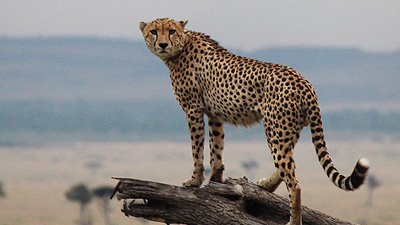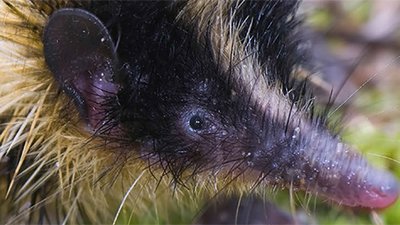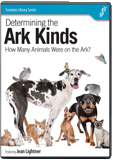Obscured Knowledge of Original Domestic Dog
Designing man’s best friend has obscured knowledge of the original domestic dog.
News Source
Doggie DNA analysis published in Proceedings of the National Academy of Sciences suggests no dog today resembles the original. A team led by evolutionary biologist Greger Larson of Durham University examined genetic data from 1,375 dogs representing 35 breeds along with DNA from the grey wolf. (The grey wolf is thought to be the ancestor of all modern dogs, big and small.)1 The study demonstrates the dramatic effect of domestication on dog diversity.
Larson, the lead author, says there is much we do not know about the history of dog domestication. The team found discrepancies between the earliest archaeological records of domestic dogs and previously held genetic ideas about the ancient roots of various breeds. This alerted them to the fact that cross-breeding had affected all known breeds and that it was reproductive isolation that made some breeds initially appear ancient.2
Ironically, the ubiquity of dogs combined with their deep history has obscured their origins and made it difficult for us to know how dogs became man’s best friend.
“We really love our dogs and they have accompanied us across every continent,” Larson says. “Ironically, the ubiquity of dogs combined with their deep history has obscured their origins and made it difficult for us to know how dogs became man’s best friend. All dogs have undergone significant amounts of cross-breeding to the point that we have not yet been able to trace all the way back to their very first ancestors.”
After comparing genomic information to archaeological data, Larson’s multinational team concluded that modern breeds depicted on pyramids and in ancient texts really are not ancient. Even the “genetic signatures” of breeds like the Akita, the Afghan Hound, the Basenji, the Dingo, and the Shar-Pei, previously thought to be ancient, appear to have been greatly altered.3 Cross-breeding, human migration, and historical disasters such as two world wars have all combined to change domestic dog populations. Those breeds that appear the most genetically different are also not likely to represent the oldest domestic kinds but are distinctive due to their geographic isolation and cultural exemption from the popular “Victorian-initiated Kennel Clubs that blended lineages to create most of the breeds we keep as pets today.”
Doggie diversity is a good illustration of variation within a created kind. The diversity attainable within the canine genome and its mutations is remarkable. A variety of genetic mechanisms including mutations, natural selection, artificial selection, and the population changes that occur in small populations affected by genetic bottlenecks have combined to produce the dogs we see today. Of course, this bears no relationship whatever to notions about evolution of one kind of creature into another, despite the fact that some evolutionary thinkers misuse the illustration as “an interesting demonstration of evolution at work”4 showing “without a doubt that evolution is true.”5 Change within a created kind is not evidence for evolution of one kind changing into a new kind, because such “new kinds” would require new genetic information, not just a reshuffling of existing information. However, evolutionists have never provided us with a proven biological mechanism for producing new genetic information.
The originally created canine, like all kinds of creatures, was created to reproduce after its kind. The canine genome originally created by God has provided the raw material for an innumerable variety of canines, but they are all still canines. Mutations have resulted in a loss of genetic information within certain groups of dogs but have not provided the information for dogs to evolve into a non-dog. No evolution in the molecules-to-man sense was required to produce dog diversity, and such evolution has never been demonstrated by the study of fossils or living creatures.
Further Reading
- Variety Within Created Kinds
- Hairy New Findings in Dog Variation
- Is Your Dog Some Kind of Degenerate Mutant?
For More Information: Get Answers
Remember, if you see a news story that might merit some attention, let us know about it! (Note: if the story originates from the Associated Press, FOX News, MSNBC, the New York Times, or another major national media outlet, we will most likely have already heard about it.) And thanks to all of our readers who have submitted great news tips to us. If you didn’t catch all the latest News to Know, why not take a look to see what you’ve missed?
(Please note that links will take you directly to the source. Answers in Genesis is not responsible for content on the websites to which we refer. For more information, please see our Privacy Policy.)
Footnotes
- Greger Larson et al., “Rethinking Dog Domestication by Integrating Genetics, Archaeology, and Biogeography,” PNAS 109, no. 23 (June 5, 2012):8878–8883, doi:10.1073/pnas.1203005109.
- Ibid.
- Ibid.
- Steven Potter, “Dogs Prove Evolution,” Eveloce, April 24, 2011, http://eveloce.scienceblog.com/10/dogs-prove-evolution/.
- Ibid.
Recommended Resources

Answers in Genesis is an apologetics ministry, dedicated to helping Christians defend their faith and proclaim the good news of Jesus Christ.
- Customer Service 800.778.3390
- © 2024 Answers in Genesis






